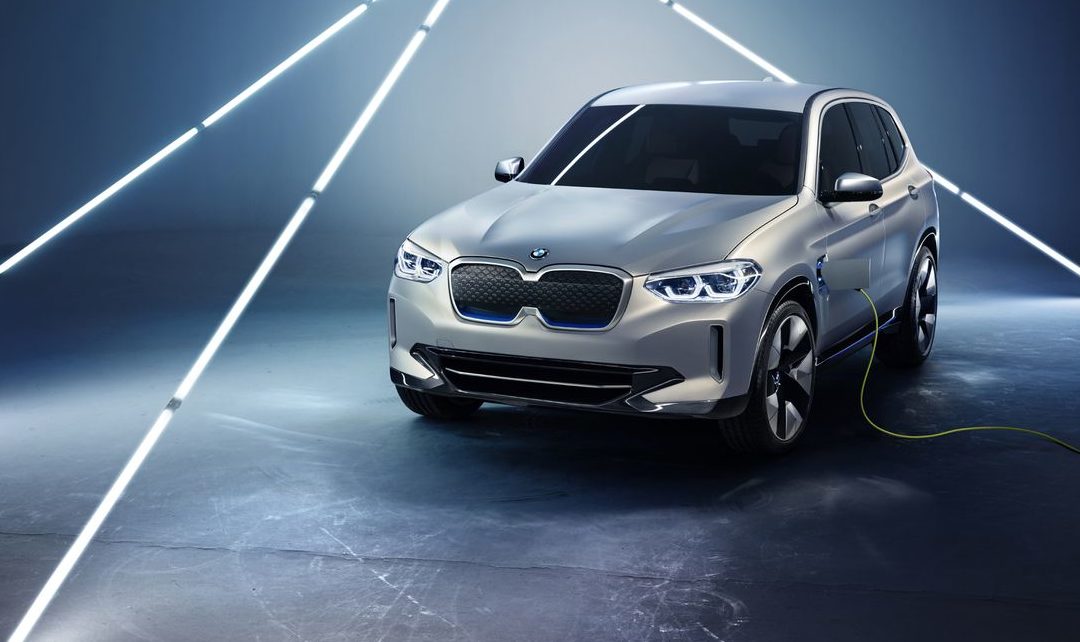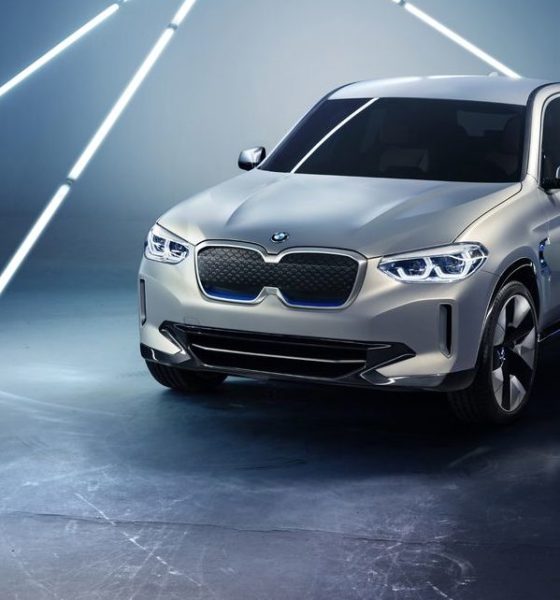

Investor's Corner
BMW CEO reportedly risks replacement amid poor sales, weak EV strategy, and the rise of Tesla’s Model 3
BMW CEO Harald Krüger has always preferred to work in the background. Content to leave the stage for others, Krüger has mostly led BMW in an almost understated manner. Yet, in a recent meeting with German Chancellor Angela Merkel and fellow executives from rivals Volkswagen and Daimler, the CEO proved assertive, announcing that BMW will be looking to sell around 300,000 electric and electrified vehicles annually by 2021.
Krüger’s assertive stance on EVs is likely due to pressures that BMW is feeling in the electric vehicle market, which has, in more ways than one, started affecting the security of the CEO’s post. The 53-year-old BMW executive’s contract expires in May 2020, and theoretically, the company’s Supervisory Board could extend it. Unfortunately, reports are now emerging that Krüger’s contract as BMW’s chief executive might not be extended anymore, according to information gathered by German news agency Handelsblatt.
Amidst BMW’s current challenges, the publication alleges that the automaker no longer considers an extension of Krüger’s CEO contract as the most plausible scenario in the near future. Talks of tensions in BMW’s leadership have emerged, and an insider has even noted that there is “high pressure in the boiler.” If Krüger is not able to keep his CEO post, two board members are reportedly set to take over his seat: the ambitious Head of Development Klaus Fröhlich and the more tempered Oliver Zipse, who took over BMW’s production department from Krüger back in 2015.
BMW is currently facing a number of challenges. The company has initiated a group-wide “hiring freeze,” and the CEO’s critics were quick to point out that despite BMW’s “biggest model offensive in the company’s history,” sales have stagnated. Over the past nine months, the German automaker surprised with two profit warnings, and margins for its vehicles are under pressure. Krüger, for his part, remained cautiously optimistic, stating that “In the second half of the year, we expect a tailwind” amid the upcoming release of large vehicles like the BMW X7 SUV.
Hiring freezes and poor sales aside, one thing that has notably irked the German automaker’s shareholders is its poor electric vehicle strategy. In 2013, Krüger’s predecessor, Norbert Reithofer, launched the BMW i3, a curiously futuristic electric car that was compared to the Tesla Model S. BMW has not released a pure battery-electric vehicle since then. Jaguar has started its push with the I-PACE, Audi has released the e-tron, and Mercedes-Benz has already unveiled the EQC. BMW’s iX3, on the other hand, won’t be ready for at least another year. Speaking to the publication, a competitor noted that “BMW was ahead, now they are suspended.”
The emergence of Tesla as a player in the premium sedan market has also become a painful pill to swallow for BMW. With its international rollout, the Tesla Model 3 continued to hack away at the sales of BMW’s iconic 3-Series sedan. Tests from publications such as Top Gear, which have been traditionally pro-petrol in the past, have also recognized the Silicon Valley-made Model 3 as superior in more ways than one to a BMW. Tesla’s rise has not escaped the attention of BMW’s investors, who appear to be getting quite impatient with the German automaker’s delayed, if not half-hearted EV strategy.
These sentiments were expressed during BMW’s annual shareholder meeting in May. Addressing the company, shareholder protector Daniela Bergdolt did not mince words. “I now expect an electric offensive that sweeps Tesla off the table,” she said, and the company did not really have a strong response. There’s the i4 and the iNext, but both vehicles don’t currently have a concrete release date. The impressive BMW Vision M Next, which was recently revealed, is also an eye-catching concept vehicle, but it still remains to be seen if or when the car will enter production.

Investor's Corner
Tesla stock closes at all-time high on heels of Robotaxi progress

Tesla stock (NASDAQ: TSLA) closed at an all-time high on Tuesday, jumping over 3 percent during the day and finishing at $489.88.
The price beats the previous record close, which was $479.86.
Shares have had a crazy year, dipping more than 40 percent from the start of the year. The stock then started to recover once again around late April, when its price started to climb back up from the low $200 level.
This week, Tesla started to climb toward its highest levels ever, as it was revealed on Sunday that the company was testing driverless Robotaxis in Austin. The spike in value pushed the company’s valuation to $1.63 trillion.
Tesla Robotaxi goes driverless as Musk confirms Safety Monitor removal testing
It is the seventh-most valuable company on the market currently, trailing Nvidia, Apple, Alphabet (Google), Microsoft, Amazon, and Meta.
Shares closed up $14.57 today, up over 3 percent.
The stock has gone through a lot this year, as previously mentioned. Shares tumbled in Q1 due to CEO Elon Musk’s involvement with the Department of Government Efficiency (DOGE), which pulled his attention away from his companies and left a major overhang on their valuations.
However, things started to rebound halfway through the year, and as the government started to phase out the $7,500 tax credit, demand spiked as consumers tried to take advantage of it.
Q3 deliveries were the highest in company history, and Tesla responded to the loss of the tax credit with the launch of the Model 3 and Model Y Standard.
Additionally, analysts have announced high expectations this week for the company on Wall Street as Robotaxi continues to be the focus. With autonomy within Tesla’s sights, things are moving in the direction of Robotaxi being a major catalyst for growth on the Street in the coming year.
Elon Musk
Tesla needs to come through on this one Robotaxi metric, analyst says
“We think the key focus from here will be how fast Tesla can scale driverless operations (including if Tesla’s approach to software/hardware allows it to scale significantly faster than competitors, as the company has argued), and on profitability.”

Tesla needs to come through on this one Robotaxi metric, Mark Delaney of Goldman Sachs says.
Tesla is in the process of rolling out its Robotaxi platform to areas outside of Austin and the California Bay Area. It has plans to launch in five additional cities, including Houston, Dallas, Miami, Las Vegas, and Phoenix.
However, the company’s expansion is not what the focus needs to be, according to Delaney. It’s the speed of deployment.
The analyst said:
“We think the key focus from here will be how fast Tesla can scale driverless operations (including if Tesla’s approach to software/hardware allows it to scale significantly faster than competitors, as the company has argued), and on profitability.”
Profitability will come as the Robotaxi fleet expands. Making that money will be dependent on when Tesla can initiate rides in more areas, giving more customers access to the program.
There are some additional things that the company needs to make happen ahead of the major Robotaxi expansion, one of those things is launching driverless rides in Austin, the first city in which it launched the program.
This week, Tesla started testing driverless Robotaxi rides in Austin, as two different Model Y units were spotted with no occupants, a huge step in the company’s plans for the ride-sharing platform.
Tesla Robotaxi goes driverless as Musk confirms Safety Monitor removal testing
CEO Elon Musk has been hoping to remove Safety Monitors from Robotaxis in Austin for several months, first mentioning the plan to have them out by the end of 2025 in September. He confirmed on Sunday that Tesla had officially removed vehicle occupants and started testing truly unsupervised rides.
Although Safety Monitors in Austin have been sitting in the passenger’s seat, they have still had the ability to override things in case of an emergency. After all, the ultimate goal was safety and avoiding any accidents or injuries.
Goldman Sachs reiterated its ‘Neutral’ rating and its $400 price target. Delaney said, “Tesla is making progress with its autonomous technology,” and recent developments make it evident that this is true.
Investor's Corner
Tesla gets bold Robotaxi prediction from Wall Street firm
Last week, Andrew Percoco took over Tesla analysis for Morgan Stanley from Adam Jonas, who covered the stock for years. Percoco seems to be less optimistic and bullish on Tesla shares, while still being fair and balanced in his analysis.

Tesla (NASDAQ: TSLA) received a bold Robotaxi prediction from Morgan Stanley, which anticipates a dramatic increase in the size of the company’s autonomous ride-hailing suite in the coming years.
Last week, Andrew Percoco took over Tesla analysis for Morgan Stanley from Adam Jonas, who covered the stock for years. Percoco seems to be less optimistic and bullish on Tesla shares, while still being fair and balanced in his analysis.
Percoco dug into the Robotaxi fleet and its expansion in the coming years in his latest note, released on Tuesday. The firm expects Tesla to increase the Robotaxi fleet size to 1,000 vehicles in 2026. However, that’s small-scale compared to what they expect from Tesla in a decade.
Tesla expands Robotaxi app access once again, this time on a global scale
By 2035, Morgan Stanley believes there will be one million Robotaxis on the road across multiple cities, a major jump and a considerable fleet size. We assume this means the fleet of vehicles Tesla will operate internally, and not including passenger-owned vehicles that could be added through software updates.
He also listed three specific catalysts that investors should pay attention to, as these will represent the company being on track to achieve its Robotaxi dreams:
- Opening Robotaxi to the public without a Safety Monitor. Timing is unclear, but it appears that Tesla is getting closer by the day.
- Improvement in safety metrics without the Safety Monitor. Tesla’s ability to improve its safety metrics as it scales miles driven without the Safety Monitor is imperative as it looks to scale in new states and cities in 2026.
- Cybercab start of production, targeted for April 2026. Tesla’s Cybercab is a purpose-built vehicle (no steering wheel or pedals, only two seats) that is expected to be produced through its state-of-the-art unboxed manufacturing process, offering further cost reductions and thus accelerating adoption over time.
Robotaxi stands to be one of Tesla’s most significant revenue contributors, especially as the company plans to continue expanding its ride-hailing service across the world in the coming years.
Its current deployment strategy is controlled and conservative to avoid any drastic and potentially program-ruining incidents.
So far, the program, which is active in Austin and the California Bay Area, has been widely successful.








